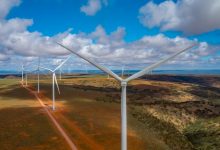South Australia’s Liberal government has revealed the key partners in its planned $13 billion hydrogen hub at Port Bonython as the state heads into an election next week that pollsters say is too close to call.
The partners cited for what the Marshall government says could host up to 3GW of hydrogen electrolysers by 2030 include Fortescue Future Industries, Origin Energy, Santos and H2U, along with international companies such as Eneos, Chiyoda, Mitsubishi and AMP Energy.
“Port Bonython’s outstanding location, South Australia’s world class renewable energy resources and this $67 million strategic investment by the Marshall Government will attract billions of dollars of private investment,” Premier Steven Marshall said in a statement.
“The level of global investment interest in the Port Bonython Hydrogen Hub has the capacity to transform South Australia into a renewable energy exporter of world standing in the next decade.”
The announcement comes just one week before the state’s election, which political analysts say hangs in the balance, although betting agencies such as Sportsbet are quoting odds of $1.45 for a Labor majority, $2.60 for the Liberals to retain power, and $4.75 for a Liberal majority.
The Liberal government – which won power in 2018 after 16 years of Labor government, is already in minority, having suffered the defection of several former party members to the cross-bench.
The timing of the hydrogen announcement is interesting because hydrogen strategy appears to be the key difference between the two major parties on energy matters in an election campaign that has focused almost entirely on health and covid-19 issues.
Labor last week boasted of its plan to build a government-funded hydrogen hub at Whyalla, at a cost of $592 million, that would lead to a 250MW electrolyser and a 200MW hydrogen-fuelled power station. It says this will be a catalyst to $20 billion of new hydrogen investment.
Labor’s energy spokesman Tom Koutsantonis told RenewEconomy it was essential for governments to kick-start the new technology to demonstrate what could be done, and allow private investment to follow.
“The only way to get more renewables to export is to develop hydrogen. It decarbonises, encourages electrification, can store fuels and has industrial uses – such as green steel and glass manufacturing.
“We got caned for backing the Hornsdale battery, but it proved the technology at scale. That’s my argument with hydrogen, the only way to do that is to have a government generator to run at scale, to build a big electrolyser.”
The Liberals’ view is that Labor’s plan is wasteful, is likely to cost twice as much, and that it is smarter to offer facilities such as Port Bonython at scale to attract private investment with the help of modest government funding.
The list of partners cited for Port Bonython should not be too much of a surprise, given the strong presence of Santos in the local industry, the ambition of FFI to be everywhere, and the already stated intentions of AMP Energy to be heavily involved. Perhaps one surprise might be the non inclusion of the likes of Neoen.
South Australia has emerged as the world’s leader in the transition of a gigawatt-scale grid from fossil fuels to wind, solar and storage.
In the past year it has sourced 64 per cent of its local demand from wind and solar, and the Liberals stated intention is to reach “net 100 per cent renewables” by 2030, and go beyond that as a renewable exporter.
The 100 per cent target is likely to be reached within a few years, particularly with the new transmission link to NSW.
Koutsantonis told RenewEconomy this week that he was disappointed by the small number of new wind farms that had been connected to the grid since Labor lost power four years ago.
And while insisting he was actually supportive of the new transmission link to NSW, he was skeptical about the amount of new capacity it would support given the weight of projects proposed on the NSW side of the border.
“You are not going to get a $10 billion investment in South Australian wind and solar when you have got (NSW energy minister) Matt Kean putting others to shame. If you were building a wind farm or a solar array, why would you choose South Australia?”
The Liberals, meanwhile, say the scale of the $13 billion investment in hydrogen, also linked with a potential deal with the Port of Rotterdam, is staggering, and will aim to produce up to 1.8 million tonnes of hydrogen per annum by 2030.
“By 2030, the projects together could support up to three gigawatts of electrolysis, around South Australia’s current peak demand, and support over six gigawatts of new renewable energy,” Marshall said in Friday’s statement.
“This is more than one and a half times the amount of renewable energy installed in South Australia. In addition, all projects have scoped further potential expansions after 2030.”
Additional reporting from Michael Mazengarb










